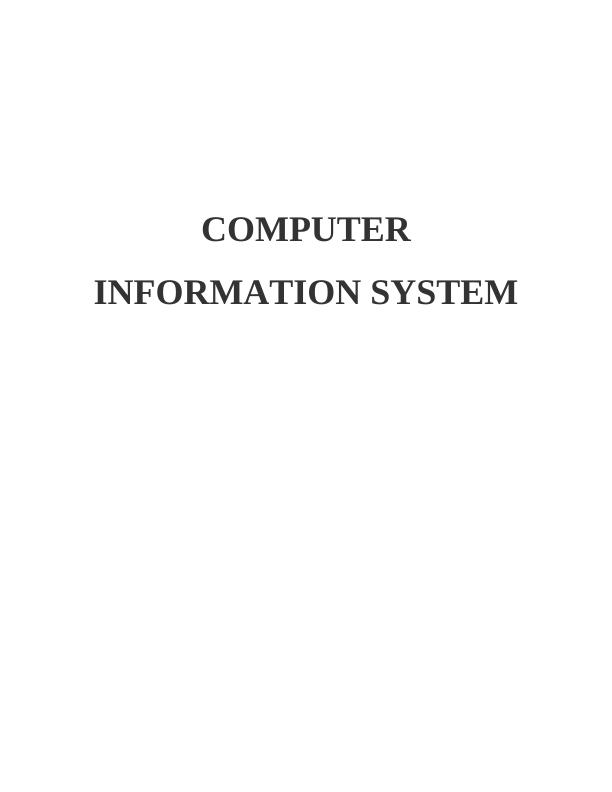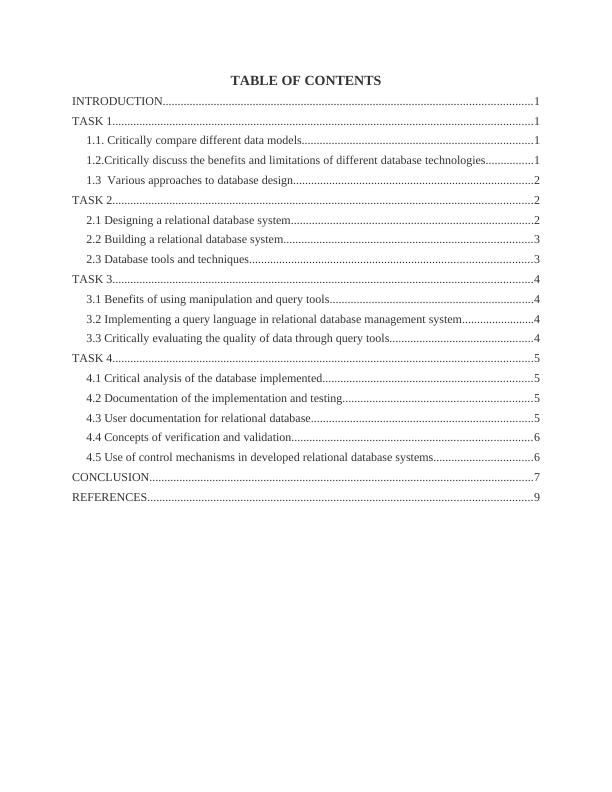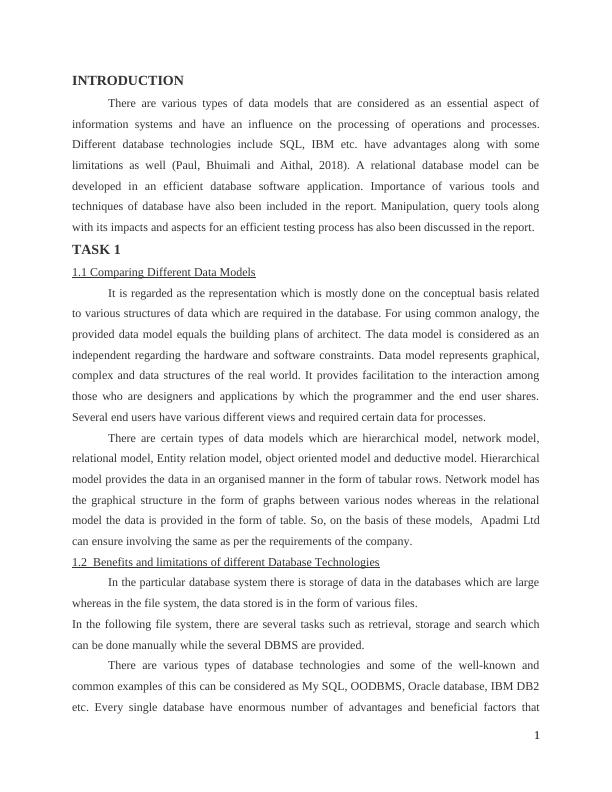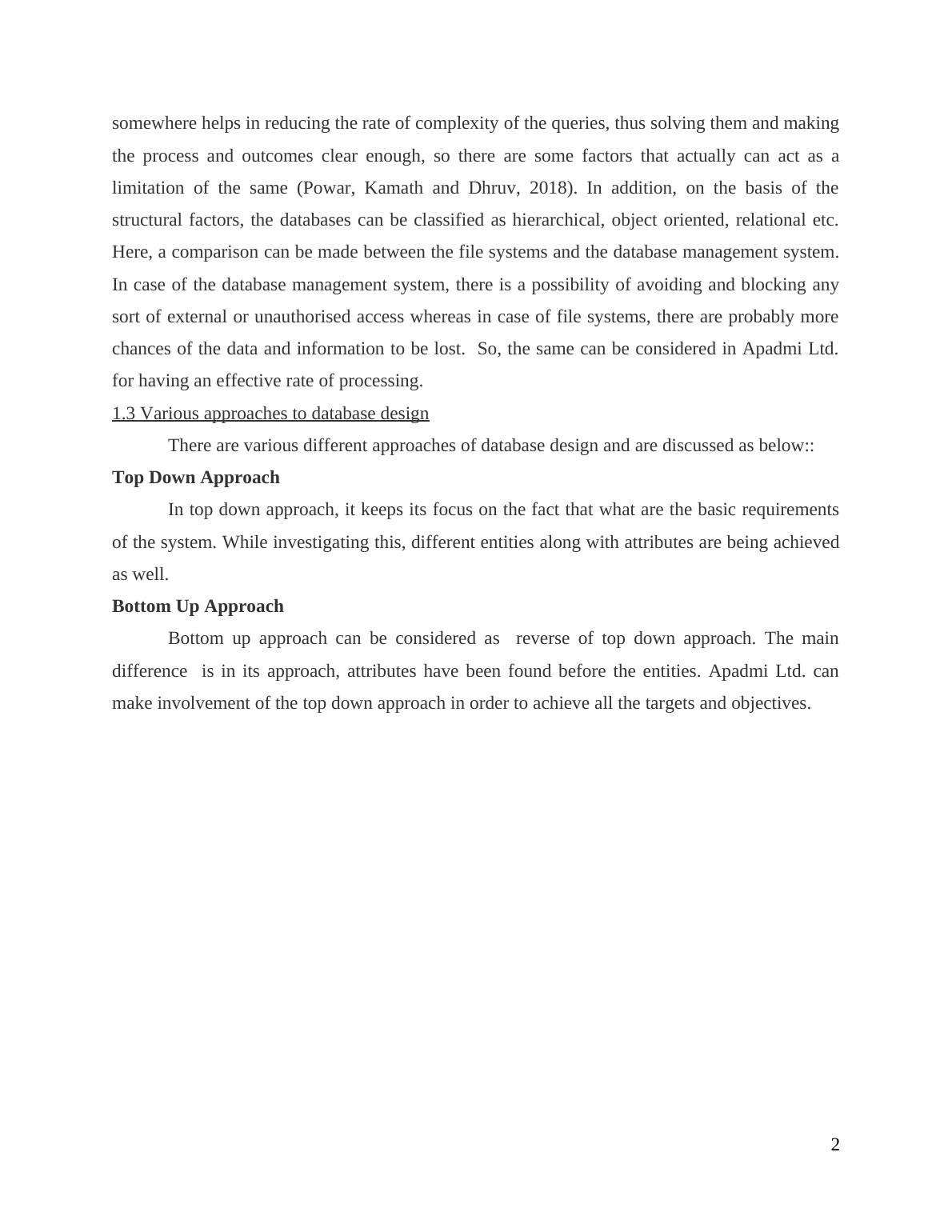Database Technologies and Techniques
11 Pages2612 Words266 Views
Added on 2020-10-22
About This Document
Critically compare different data models1 1.2.Critically discuss the benefits and limitations of different database technologies 1 1.3 Various approaches to database design2 TASK 22 2.1 Designing a relational database system2 2.2 Building a relational database system 3 2.3 Database tools and techniques 3 TASK 34 3.1 Benefits of using manipulation and query tools 4 3.2 Implementing a query language in relational database management system 4 3.3 Critically evaluating the quality of data through query tools4 TASK 45 4.1 Critical analysis of the database implemented 5 4.2
Database Technologies and Techniques
Added on 2020-10-22
ShareRelated Documents
End of preview
Want to access all the pages? Upload your documents or become a member.
Report on Data Analysis and Design- Fast Track Health Centre
|23
|5165
|232
Data Modelling and Sql Language - Assignment
|18
|2256
|44
Database Design and Implementation for Desklib
|23
|5446
|415
Data Analysis Design Sample Assignment
|25
|4475
|412
Comparison of RDBMS with File Based System, Hierarchical, Network and Relational Database Models
|11
|2084
|140
Data Analysis and Design TABLE OF CONTENTS INTRODUCTION 1 TASK 11 A.C.1.1 Introduction
|36
|6604
|129




